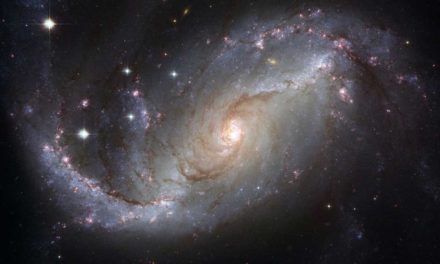Do you remember back in the 20th-century stories about living next door to a millionaire? Thomas J. Stanley and William Danko wrote “The Millionaire Next Door—The Surprising Secrets of America’s Wealthy” in 1996.[1] It’s still available on Amazon. It was called an “interesting sociological work by Business Week.” Bernie Sanders liked it. The Chicago Tribune said, “The main lesson provided is that high income does not equal wealth.”[2]
Today no one dares to write about the White Supremacist next door although there is little doubt they live next door to millions. Madame Merriam-Webster says, “White supremacy is the belief that the white race is inherently superior to other races and that white people should have control over people of other races. The alt-right is a reactionary conservative movement characterized by an embrace of fascism, white supremacy, and misogyny.”[3]
Madame Wikipedia says, “White supremacy is the belief that white people are superior to those of other races and thus should dominate them. The belief favors the maintenance and defense of any power and privilege held by white people. . . As a political ideology, it imposes and maintains cultural, social, political, historical, or institutional domination by white people and non-white supporters. In the past, this ideology has been put into effect through . . . Jim Crow laws in the United States. . This ideology is also today present among neo-Confederates.”[4]
Whiteness
Although rarely used in today’s journalism or our social media-driven reality, the term “whiteness” comes to mind as essential to what white supremacy stands for.
Whiteness and white racialized identity refer to the way that white people, their customs, culture, and beliefs operate as the standard by which all other groups of are compared. Whiteness is also at the core of understanding race in America. Whiteness and the normalization of white racial identity throughout America’s history have created a culture where nonwhite persons are seen as inferior or abnormal. This white-dominant culture also operates as a social mechanism that grants advantages to white people, since they can navigate society both by feeling normal and being viewed as normal. Persons who identify as white rarely have to think about their racial identity because they live within a culture where whiteness has been normalized.[5]
It’s important when writing about white supremacy to understand its core meaning and usage in the U.S. “White identity in America is ideology, not biology. The history of ‘whiteness’ proves it. The idea of one big white race did not just spring to life full-blown and unchanging, which is what most people assume — and white supremacists rely on.”[6]
Americans who read books and follow reputable news sources are appalled by images of atrocities that Black Americans, sadly, are all too familiar with killings at the hands of police and horrendous but routine instances of racial discrimination. These injustices have been going on for decades, with Black people staging protests largely alone. This time feels different, because anti-police brutality and anti-racist demonstrations have occurred in all 50 states, in small towns as well as big cities, and around the world. The demonstrators are not only Black this time; they display a beautiful range of races and ethnicities, in the streets together to proclaim that Black lives matter.[7]
White Supremacy Culture
Unsurprisingly, there is a “White Supremacy Culture” built around and under America today. “Culture is powerful precisely because it is so present and at the same time so very difficult to name or identify. [It] is damaging because it’s used by some as a norm without being pro-actively named or chosen by the group. [It] is damaging because it promotes white supremacy thinking that is damaging to both people of color and to white people.”[8]
A majority of Americans say policing should be reformed. But most white people still don’t think police treat Black people differently.[9] “The trend of fatal police shootings in the United States seems to only be increasing, with a total of 828 civilians having been shot, 181 of whom were Black, as of September 10, 2024. In 2023, there were 1,163 fatal police shootings. Additionally, the rate of fatal police shootings among Black Americans was much higher than that for any other ethnicity, standing at 6.2 fatal shootings per million of the population per year between 2015 and September 2024.”[10]
“The United States is living through a moment of profound and positive change in attitudes toward race, with a large majority of citizens coming to grips with the deeply embedded historical legacy of racist structures and ideas. The recent protests and public reaction to George Floyd’s murder are a testament to many individuals’ deep commitment to renewing the founding ideals of the republic. But there is another, more dangerous, side to this debate—one that seeks to rehabilitate toxic political notions of racial superiority, stokes fear of immigrants and minorities to inflame grievances for political ends, and attempts to build a notion of an embattled white majority which has to defend its power by any means necessary. These notions, once the preserve of fringe white nationalist groups, have increasingly infiltrated the mainstream of American political and cultural discussion, with poisonous results.”[11]
Movements like the alt-right are classified as racist or white supremacist. But like all political movements, it is not that simple. “Although the racist right can be ideologically diverse and make many different arguments, there are three key sentiments that are widely shared across these movements: (1) a strong sense of white identity, (2) a belief in the importance of white solidarity, and (3) a sense of white victimization. Although someone who rates high on all of these views may not necessarily identify with the Alt-Right or a similar movement, we can anticipate all or nearly all individuals who are involved in white identity politics to share these attitudes.”[12]
White Privilege
“White privilege is an institutional, rather than personal, set of benefits granted to those of us who, by race, resemble the people who dominate the powerful positions in our institutions. One of the primary privileges is that of having greater access to power and resources than people of color do; in other words, purely on the basis of our skin color doors are open to us that are not open to other people. The best example is financial history. White people in the United States are two to ten times more likely to get a housing loan than people color—access to resources.”[13]
Today, white privilege is often described through the lens of Peggy McIntosh’s groundbreaking essay White Privilege: Unpacking the Invisible Knapsack. “Originally published in 1988, the essay helps readers recognize white privilege by making its effects personal and tangible. For many, white privilege was an invisible force that white people needed to recognize. It was being able to walk into a store and find that the main displays of shampoo and pantyhose were catered toward your hair type and skin tone. It was being able to turn on the television and see people of your race widely represented. It was being able to move through life without being racially profiled or unfairly stereotyped.”[14]
Racism vs. White Privilege
“Having white privilege and recognizing it is not racist. But white privilege exists because of historic, enduring racism and biases. Therefore, defining white privilege also requires finding working definitions of racism and bias.”[15]
Racism is a belief that race is a fundamental determinant of human traits and capacities and that racial differences produce an inherent superiority of a particular race. It is the systemic oppression of a racial group for the social, economic, and political advantage of another.[16]
Racism is a form of oppression based on race. Unlike discrimination, oppression takes into account power — who is positioned to hold power and who is positioned not to hold power because of the ways society has been set up and functioned for generations. In other words, oppression takes into account agent and target group membership. People who identify as Black, Indigenous, and People of Color are targets of racism.[17]
The Guardian reported on an important definitional change of the word, “racism.” Madame Merriam-Webster revised its historic definition four years ago. The new definition incorporates the idea that prejudice alone is not racism. “Definition of racism: (1) a belief that race is the primary determinant of human traits and capacities and that racial differences produce an inherent superiority of a particular race. (2) a doctrine or political program based on the assumption of racism and designed to execute its principles. (3) a political or social system founded on racism. (4) a political or social system founded on racism.”[18]
White Supremacy and Energy Grids
“Three men with ties to white supremacist groups were sentenced to prison for planning to attack a power grid in the northwestern United States. Last year, federal law enforcement officials charged two people with conspiracy to destroy an energy facility and accused them of creating a racist plot to cut power in Baltimore, a predominantly Black city. In February 2022, three men also connected to white supremacist groups pleaded guilty over a scheme to target substations around the country in an attempt to cause “economic distress and civil unrest,” according to the F.B.I. These plots, though unsuccessful, are part of a larger trend by far-right extremist groups in recent years to try to create chaos by bringing down the energy infrastructure that keeps society functioning, according to experts in extremism. . . There is a long history of extremist attacks on critical infrastructure in the United States. . . A 2022 study by researchers at George Washington University that analyzed planned attacks on infrastructure from 2016 to 2022 found that such plans among white supremacist groups “dramatically increased in frequency” at that time. During those years, 13 individuals associated with white supremacist groups were charged with planning attacks on the energy sector; 11 of those 13 people were charged after 2020.”[19]
America’s Growing Problem with White Supremacy
The headline by Just Security.org stated the obvious: Not Just Trump: America’s Growing Problem With Race.”
“During the first presidential debate of the 2024 race, former President Donald Trump once again used racially charged rhetoric, this time to attack President Joe Biden as a “very bad Palestinian.” The former president followed it up the next day by repeating the same smear against Senate Majority Leader Chuck Schumer. Only a few days earlier, Trump doubled down on his disparaging rhetoric aimed at undocumented immigrants. The former president’s incendiary remarks and track record on race make it easy to personalize the challenge his nativist presidential campaign poses to America’s multi-racial and multi-ethnic nation. Trump, however, is not operating in a vacuum. Instead, the former president is feeding off the enduring undercurrents of racism in our society, our politics, and our institutions. Evidence is often hiding in plain sight. Consider the decisions and actions of our judicial system, state governments, and national politicians.”[20]
Vox.com explained “Donald Trump’s long history of enabling white supremacy on November 29, 2022, Over the years, Trump has repeatedly egged on white supremacists — who believe that white people are inherently superior — and white nationalists, who desire a physical or symbolic white nation, with racist dog whistles. At times, he has even overtly defended them. His affiliation has given a bigger platform to hate-based movements broadly, and they, in turn, have become an indispensable part of his base. The groups became emboldened in the Trump era to make their views more explicit: For instance, during the January 6 insurrection, protesters carried a Confederate flag into the US Capitol, erected a gallows and noose on the lawn, and evoked a seminal white nationalist text. Trump has made himself an icon of white extremists by time and time again surrounding himself with advisers sympathetic to their views. His disavowals of them, usually offered only when reporters pressed him, haven’t been overly forceful, and he’s made racist statements of his own, further normalizing their views.”[21]
A report from the ADL Center on Extremism explores how white supremacists in the United States have experienced a resurgence in the past three years, driven largely by the rise of the alt-right. The alt-right is the newest segment of the white supremacist movement, bringing new energy and activism to the movement’s racism and anti-Semitism.[22]
President Biden has long been a voice against white supremacy. “Speaking from the pulpit of Mother Emanuel AME Church in Charleston, South Carolina, President Joe Biden did not hold back from using the phrase “white supremacy” or emphasizing its impact on American history. “It’s a poison. Throughout our history, it’s ripped this nation apart. This has no place in America. Not today, tomorrow, or ever. . .The church is famously the site of a horrific hate crime, the massacre of nine parishioners at the hands of Dylann Roof, a neo-Nazi who was radicalized online. Biden expanded the scope, connecting Roof’s violent assault to Donald Trump, the MAGA war on democracy, and the efforts to rewrite history to be more flattering to far-right views. They tried to steal an election. Now they’re trying to steal history, telling us that violent mob was, and I quote, ‘a peaceful protest,’” Biden said. He linked this to the long history of racists trying to rewrite the history of the Civil War with “a self-serving lie that the Civil War was not about slavery but about states’ rights.”[23]
Psychological Safety In Race Relations
America is growing in non-white population. Nationally, the U.S. grew by 19.5 million people between 2010 and 2019—a growth rate of 6.3%. While the white population declined by a fraction of a percent, Latino or Hispanic, Asian American, and Black, respectively.[24]
Recent demographics in America are gradually resulting in a larger non-white population throughout the country. “There is a tipping point when non-whites become 30 percent or more of any population, which triggers a fight or flight reaction in whites. This can happen even when non-white people become more visible in the media in ways that defy racial stereotypes of those people. It is difficult for whites to recalibrate their position as the dominant race and adapt to the new reality of not being the majority, even if they still technically are.”[25]
“While the election of Barack Obama as the 44th president of the United States was an amazing achievement, it was also a critical moment in this country’s race relations for more reasons than most think. True, he was elected the first Black president, something many Black people never thought they would see in their lifetimes. And true, it was a defining moment for us as a country that has subjected Black people for more than 400 years. But it also threatened the psychological safety of many white people and created a significant backlash of white nationalism.[26]
According to the Southern Poverty Law Center in 2023, there were 165 active white nationalist hate groups in the U.S. — the highest number ever recorded. “These groups, according to SPLC, have been actively organizing on the ground, participating in demonstrations, and working with mainstream right-wing groups, especially around anti-LGBTQ, and anti-abortion events. These groups aim to air the grievances of right-leaning white Americans, who feel that they are being replaced by non-whites who don’t have the right to be called Americans.”[27]
White supremacist propaganda soared to a record high in 2023. “In 2023, for the second year in a row, ADL recorded its highest-ever number of white supremacist propaganda incidents, with a total of 7,567 cases. This is a 12 percent increase from the 6,746 incidents in 2022. There was also a 30 percent increase in specifically antisemitic propaganda, rising to 1,112 incidents in 2023 from 852 incidents in 2022.[28]
White Supremacy and Project 2025
Project 2025 is an all-out assault on civil rights. It is a transition plan spearheaded by the Heritage Foundation — a right-wing think tank — for the next Republican president. Trump hasn’t officially co-signed, but many of his associates are authors. The policy agenda is expansive, detailing how to use the federal apparatus to repeal gains made in many arenas, from education and infrastructure to health care and LGBTQ issues. These rollbacks would, to no one’s surprise, disproportionately harm Black Americans. This political vision only reaffirms how invested the conservative movement is in “normalizing white supremacy” and “standing close to people who espouse some of the worst rhetoric about Black people and race.[29]
The Goal—A White Ethnostate
Dictionary.com says it’s a noun meaning, “a country populated by, or dominated by the interests of, a single racial or ethnic group: Some white nationalist movements envision an ethnostate as the ideal.” The only country in the world that describes itself that way is Northern Ireland. But there are several “ethnocracies” out there. “An ethnocracy is a type of political structure in which the state apparatus is controlled by dominant ethnic groups to further its interests, power, dominance, and resources. Ethnocratic regimes in the modern era typically display a ‘thin’ democratic façade covering a more profound ethnic structure, in which ethnicity (race, religion, language etc.) – and not citizenship – is the key to securing power and resources.[30]
Madame Wikipedia lists ten countries as ethnocracies or with similar governing structures. Belgium, Malaysia, Israel, Latvia and Estonia, Northern Ireland, Rwanda, South Africa, Turkey, and Uganda.[31]
“White nationalist groups espouse white supremacist or white separatist ideologies, often focusing on the alleged inferiority of people of color. They frequently claim that white people are unfairly persecuted by society and even the victims of racial genocide. Their primary goal is to create a white ethnostate. Groups listed in a variety of other categories, including Ku Klux Klan, neo-Confederate, neo-Nazi, racist skinhead, and Christian Identity, could also be fairly described as white nationalist.”[32]
Perhaps the closest the U.S. has to a wanna-be ethnostate is the “Proud Boys.” Beacon Press released an essay titled, Proud Boys and the White Ethnostate. “Alt-right memes that have erupted online and digs to the root of the far right’s motivations: their deep-seated fear of an oncoming “white genocide” that can only be remedied through aggressive action to reclaim white power. The alt-right has expanded significantly throughout America’s cultural, political, and digital landscapes: racist, sexist, and homophobic beliefs that were previously unspeakable have become commonplace, normalized, and accepted—endangering American democracy and society as a whole. When asked to address the Proud Boys and growing far-right violence, President Trump directed the group to “stand back and stand by;” and just two weeks before President Joe Biden’s inauguration, a white supremacist mob breached the US Capitol—earning praise from the Proud Boys leader amongst threats of future violence. In order to dismantle the destructive movement that has invaded our public consciousness and threatens American democracy, we must first understand the core beliefs that drive the alt-right.”
Fortunately, white supremacy has not yet burrowed up far enough to be a national scare. Some white supremacists are also neo-Nazis. Only nine percent of Americans think it’s acceptable to hold such views.[33]
Black Lives Matter
The opposite of white supremacy is anti-white, another form of racism. While white supremacist groups are finding a geopolitical landscape that has grown more supportive of their rhetoric and activities, Black Americans are also exercising resistance and resilience given recent alarming statements. Like the historic civil rights movement, Black Lives Matter has drawn Americans to grapple with contemporary nationalism. America is now in fragile times that deserve the attention of federal, state, and local policies to confront white supremacy and other historical vestiges standing in the way of racial healing and reconciliation.”[34]
That is a good thing because about 39.9% of the American population is considered non-white, with the “white” category representing around 60.1% of the population.[35]
The Washington Post answered the pivotal question—just how racist is the MAGA movement? It has long been understood that the MAGA movement depends heavily on White grievance and straight-up racism. Hence Donald Trump’s refusal to disavow racist groups and his statement that there were “very fine people on both sides” in the violent clashes at the white-supremacist rally in Charlottesville. . . The connection between racism and the right-wing movement is apparent in a new poll from the Public Religion Research Institute. The survey asked respondents about 11 statements designed to probe views on racism. For example: “White Americans today are not responsible for discrimination against Black people in the past.” The pollsters then used their answers to quantify a “structural racism index,” which provides a general score from zero to 1 measuring a person’s attitudes on “white supremacy and racial inequality, the impact of discrimination on African American economic mobility, the treatment of African Americans in the criminal justice system, general perceptions of race, and whether racism is still a significant problem today.” Higher scores indicate a more receptive attitude to racist beliefs. . . “Among all Americans, the median value on the structural racism index is 0.45, near the center of the scale,” the poll found. “The median score on the structural racism index for Republicans is 0.67, compared with 0.45 for independents and 0.27 for Democrats.” Put differently, Republicans are much more likely to buy into the notion that Whites are victims.”[36]
[1] https://www.amazon.com/Millionaire-Next-Door-Surprising-Americas/dp/1589795474
[2] Ibid.
[3] https://www.merriam-webster.com/dictionary/white%20supremacy
[4] https://en.wikipedia.org/wiki/White_supremacy
[5] https://nmaahc.si.edu/learn/talking-about-race/topics/whiteness
[6] https://www.google.com/search?q=white+identiy+in+america+is+ideology+not+biology&oq=white+identiy+in+america+is+ideology+not+biology&gs_lcrp=EgZjaHJvbWUyBggAEEUYOdIBCTM3OTUwajBqN6gCALACAA&sourceid=chrome&ie=UTF-8
[7] https://www.nbcnews.com/think/opinion/white-identity-america-ideology-not-biology-history-whiteness-proves-it-ncna1232200
[8] https://www.thc.texas.gov/public/upload/preserve/museums/files/White_Supremacy_Culture.pdf
[9] https://www.pbs.org/newshour/nation/a-majority-of-americans-say-policing-should-be-reformed-but-most-white-people-still-dont-think-police-treat-black-people-differently.
[10] https://www.statista.com/statistics/585152/people-shot-to-death-by-us-police-by-race/
[11] https://www.americanprogress.org/article/white-supremacy-returned-mainstream-politics/
[12] https://www.vox.com/2018/8/10/17670992/study-white-americans-alt-right-racism-white-nationalists
[13] https://www.american.edu/student-affairs/counseling/upload/understanding-white-privilege.pdf
[14] https://www.learningforjustice.org/magazine/fall-2018/what-is-white-privilege-really
[15] https://www.learningforjustice.org/magazine/fall-2018/what-is-white-privilege-really
[16] https://www.merriam-webster.com/dictionary/racism
[17] https://www.seattle.gov/documents/Departments/RSJI/Resources/RSJI-4-Types-of-Racism-August-2021-City-of-Seattle-Office-for-Civil Rights
[18] https://www.theguardian.com/books/2020/jun/11/merriam-webster-racism-definition-revise-kennedy-mitchum
[19] https://www.nytimes.com/2024/08/08/us/white-supremacist-power-grid-attacks.html
[20] https://www.justsecurity.org/97409/trump-americas-problem-race/
[21] https://www.vox.com/policy-and-politics/23484314/trump-fuentes-ye-dinner-white-nationalism-supremacy
[22] https://www.adl.org/new-hate-and-old-changing-face-american-white-supremacy
[23] https://www.salon.com/2024/01/10/both-biden-and-speeches-make-the-stakes-clear-2024-is-a-battle-over-supremacy/
[24] https://www.brookings.edu/articles/new-census-data-shows-the-nation-is-diversifying-even-faster-than- predicted/#:~:text=Nationally%2C%20the%20U.S.%20grew%20by,%2C%20and%208.5%25%2C%20respectively.
[25] https://elm.umaryland.edu/voices-and-opinions/2024/What-This-Election-is-Teaching-Us-About-Racism.php
[26] https://elm.umaryland.edu/voices-and-opinions/2024/What-This-Election-is-Teaching-Us-About-Racism.php
[27] https://elm.umaryland.edu/voices-and-opinions/2024/What-This-Election-is-Teaching-Us-About-Racism.php
[28] https://www.adl.org/resources/report/white-supremacist-propaganda-incidents-soar-record-high-2023
[29] https://capitalbnews.org/project-2025-black-voters/
[30] Anderson, James (Nov 30, 2016). “ETHNOCRACY: Exploring and Extending the Concept.
[31] https://en.wikipedia.org/wiki/Ethnocracy#:~:text=developed%20his%20model).-,Northern%20Ireland,an%20ethnocracy%20by%20numerous%20scholars.
[32] https://www.splcenter.org/fighting-hate/extremist-files/ideology/white-nationalist
[33] https://www.statista.com/statistics/740001/share-of-americans-who-think-neo-nazi-views-are-acceptable-to-have/
[34] https://www.brookings.edu/events/why-denouncing-white-supremacy-creates-safety-security-and-racial-equity/
[35] https://en.wikipedia.org/wiki/Race_and_ethnicity_in_the_United_States
[36] https://www.washingtonpost.com/opinions/2022/09/28/racism-survey-prri-maga-republicans/

I am an author and a part-time lawyer with a focus on ethics and professional discipline. I teach creative writing and ethics to law students at Arizona State University. Read my bio.
If you have an important story you want told, you can commission me to write it for you. Learn how.






 I am an author and a part-time lawyer with a focus on ethics and professional discipline. I teach creative writing and ethics to law students at Arizona State University.
I am an author and a part-time lawyer with a focus on ethics and professional discipline. I teach creative writing and ethics to law students at Arizona State University.  My latest novel is Hide & Be.
My latest novel is Hide & Be.  If you have an important story you want told, you can commission me to write it for you.
If you have an important story you want told, you can commission me to write it for you.